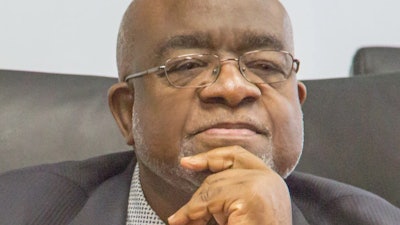America is at a crossroads. Our nation must choose one of two alternative futures. We will either choose to become the world’s first truly multiracial democracy, or we will choose to sustain or even strengthen existing patterns of segregation and inequality. At the center of this national future-choosing is urban public education
 Dr. Curtis L. Ivery
Dr. Curtis L. Ivery
It is estimated that 80% of Americans live in or near an urban and metropolitan region. Fred Pearce writes about the paradox of America’s large cities. They are, on the one hand, centers of racial and economic isolation, poverty, crime, drugs, family disintegration, failed schools, and dashed hopes. On the other hand, they are economic powerhouses, cultural hubs, and drivers of social change. As an educational and civic leader in the Detroit metropolitan region, I see every day the evidence of this paradox. Detroit is one of the most racially and residentially segregated cities in the country, and, yet, it is Michigan’s dominant driver of economic, cultural, and social change. So, there is at the same time despair and hope for a better future.
What are the changing dynamics of public school segregation that have impacted progress toward a multiracial democracy? One negative dynamic has been U.S. Supreme Court rulings. An example is the 1974 Milliken v. Bradley ruling that gutted the historic 1954 Brown v. Board of Education decision effectively banning integration between public school districts such as the Detroit Public School District and neighboring metropolitan and suburban school districts. A more recent Supreme Court ruling relates to restrictions on affirmative action in higher education, which negatively impacts the opportunity for low-income Black and other minority students to make a successful high school to college transition. Concurrently, in some cases, state legislatures are passing bans or limits on diversity/equity/inclusion programs, racial equity training for faculty and staff, the teaching of Black history, and classroom discussion on topics related to critical race theory. Another emerging dynamic in Detroit is the dramatic increase of new white residents, especially young professionals, into the central business district during the last two decades. A critical question is how these new residents will influence integration and educational equity in the city and be mirrored in the metropolitan region.
Another dynamic is a new form of segregation emerging as the U.S. transitions to a minority-majority nation. As Dr. Gary Orfield documented in the book referenced above, Black and Latino students are now concentrated in under-resourced urban and inner-ring suburban school districts while mostly white and Asian student populations are increasingly segregated from these communities and have broader access to educational and economic opportunities. This changing dynamic marks an historic shift from the binary of majority white and minority Black segregation that functioned as the basis of Brown v. Board of Education, but it also represents a new definition of public schools in the U.S. as multiracial institutions. This new definition cannot be the last chapter of our journey to become the world’s first truly multiracial democracy.
Our nation’s schools can serve as beacons of hope as they partner with other organizations to achieve the transformation to a true multiracial democracy; that is, one in which people of all races, religions, classes, and genders unite to support and activate the principles of racial, gender, and economic justice. All educational leaders are called to the front lines to advance the vision of a multiracial democracy and to defeat the forces aligned to block progress toward our national democratic and egalitarian ideals. We must be publicly, unapologetically, and courageously fierce advocates for justice and equality. To paraphrase the words of Cornel West in the foreword of another of my books, Urban Voices: Racial Justice and Community Leadership (Rowman & Littlefield, 2022): It is the transcendent power of our voices, our will, and our determination that will activate the next critical phase of the democratization of education and, indeed, our nation.
Dr. Curtis L. Ivery is the Chancellor of Wayne County Community College District.
The Roueche Center Forum is co-edited by Drs. John E. Roueche and Margaretta B. Mathis of the John E. Roueche Center for Community College Leadership, Department of Educational Leadership, College of Education, Kansas State University.
















